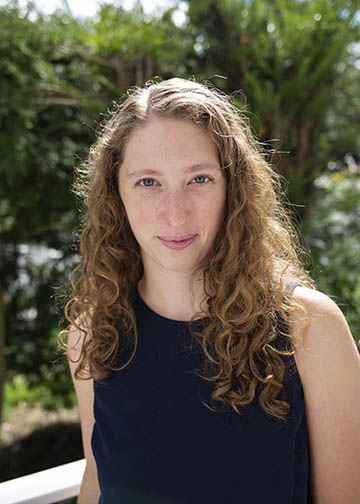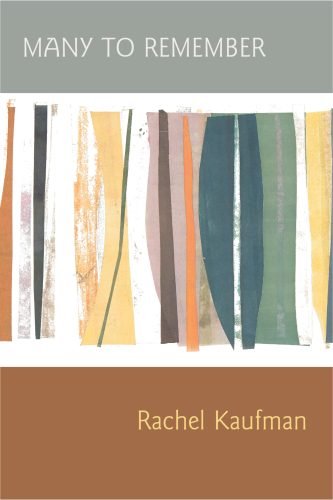- Leve Center: What motivated you to start a PhD in history? And why UCLA?
RK: I moved to New Mexico after graduating from college and was spending my time teaching, perusing the Center for Southwest Research archive at UNM, and working on Many to Remember. My archival experience was different than it had been in the past, in that I was explicitly taking haphazard notes, avoiding linear progressions through boxes, and extracting language, lines, and textures from the materials rather than patterned information. It was a glorious way to approach the archive—with poetry as the end goal rather than historical prose—but it also meant I encountered many historical questions which remained unanswered throughout the year. I applied to PhD programs with these curiosities in mind and with an eagerness to be in the classroom again, as both student and teacher. UCLA was a wonderful fit for me, with encouraging, kind, and knowledgeable faculty members who could support each aspect of my project. I was also thrilled by the department’s emphasis on interdisciplinarity and on teaching.
- Leve Center: What is your creative writing process like? Does it differ from your academic writing process?
RK: I’ve had periods where I write poetry, or at least think about and read poetry, at the same time every day. My writing process is usually quite fast and my editing process slow and visual, poems laid out on the floor. But mostly, and especially now as a graduate student, I sneak in writing time when I’m feeling some long-awaited quiet or when a phrase that’s been vibrating in my mind for some time feels as though it can find company. I usually also follow this process of languishing in language or an idea for a while and then putting it to paper quite quickly in my academic writing. The two processes, when I’m lucky, weave their way through each other. Ideally, I can look at one document in the archive and turn a moment of linguistic strangeness into a poem and a moment of narrative strangeness into history-telling, notebooks laid side by side.
- Leve Center: How do you view the relationship between your poetry and your scholarship?
I think about both my historical scholarship and my poetry as a means into the silences of the past, the archive’s unconscious and the voices held within, often beneath, the language of the archive. The forms of each medium, however, are entirely different and thus able to hold history in different ways. I have written about poetry as innately able to hold simultaneities, to place dissonances in the historical record or analogous but distinct historical events next to each other without suggesting coherence. Historical poetry can hold empathy by recording the past multidirectionally (to use Michael Rothberg’s framework): collapsing time and placing images and voices in sonic conversation. In a poem, traumas can sit next to one another without invoking comparison, causality, or hierarchy, in part because the images and language of these traumas remain elements of the world of the poem, of present-day creation. Belonging to their medium, they retain distinctness, identity as such (as metaphor, description, or rhyme). I find it more difficult to mirror the form of the archive, the ways in which history arrives to us replete with assonance, silence, and unexpected harmonies, within the form of historical prose and so must find other, sometimes less satisfying, ways to translate the past into new language.
- Leve Center: I understand you are trained as a singer of early modern music. Does your musical sensibility inform your poetics?
RK: I always try, though it’s difficult in poetry as it is in singing, to let my lines be guided by breath. My classical training certainly informs the way I think about the relationship between sounds, the closeness or distance between consonants in the mouth, and the efforts the lips and voice must make to travel from one vowel to another. Sound carries emotion, and the relationship between words in a poem is shaped both by the meaning of each word and the sound of the letters, so to think about the poetic line as one thinks about a sung line allows breath and voice to guide form, and thus content. Baroque music, which I’ve spent the most time studying and performing, was often composed with word painting, or melodies which echo the sentiment of the lyrics. This technique of mirroring melody to meaning is perhaps one starting place for my interest in the centrality of form in history and poetry.
- Leve Center: What was the most unexpected/surprising part of publishing your poetry collection, “Many to Remember?”
RK: It’s been most surprising how my conceptions of the relationship between history and poetry (which is of course always gathering and changing) has expanded after finishing the book. The process of editing, releasing words into new hands, and hearing about others’ encounters with the work have led to wonderfully unexpected understandings of the work in my own mind. Publishing the book has led to many incredible conversations with others who engage with similar questions of translating the past and the archive through new media. It’s also been interesting to watch my connection to the book, to certain parts of the book or certain poems, fluctuate across time. To differing degrees over the past months, and at unexpected moments, have I felt re-submerged in the text, able to fully access the mind that wrote it and the book’s internal logics and maneuverings.
- Leve Center: If you could have dinner with any figure related to your research and any figure who inspired your poetry, who would fill these chairs?
RK: A difficult question! I think I would be most interested to watch minds interact with each other. I’ve been immersed in Dickinson’s poetry the past few months—and have been thrilled to find a renewed patience in my reading of her silences—and would love to watch a conversation between her and my great-grandmother, Miriam, to whom my book is dedicated (along with my sister, Mira, her namesake). For my research, I suppose I want what most historians would want, which is to be a fly on the wall in the time and space of my work. I don’t long to witness an Inquisition trial, but to sit in the homes of some of the voices I encounter in those trial documents and see the ways in which they preserved, adapted, and transmitted their traditions to the next generation would be incredible. And I wouldn’t mind trying the food at their table.
Rachel is a PhD student in History at UCLA, where she works on Latin American and Jewish history. Her current research focuses on crypto-Jewish memory practices in New Mexico and Mexico from the late 15th century to the 20th century.
She her first poetry book titled Many to Remember released by Dos Madres Press. In this debut poetry collection, Rachel Kaufman enters the archive’s unconscious to reveal the melodies hidden within the language of the past. Many to Remember unravels the histories of New Mexican crypto-Jews and the Mexican Inquisition alongside the poet’s own family histories. Kaufman’s poems follow “fleshed like fables” and “the past’s near ending” to arrive at an “alphabet, gardened, growing,” creased and longing to translate the past for the present.

